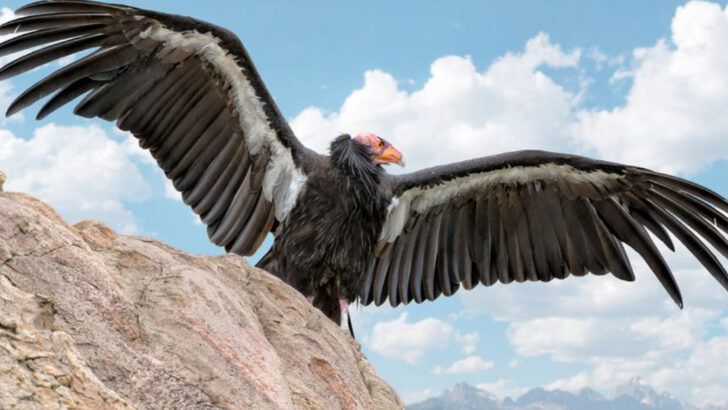With wings wide enough to cast a shadow over a car, the Andean condor doesn’t just fly—it dominates.
This isn’t your average bird.
This is the king of the Andes.
A sky sovereign with a wingspan that can stretch over ten feet and a presence that silences the wind itself.
Gliding for hours without a single flap, the Andean condor rules the high-altitude thermals with eerie grace. It doesn’t chase prey. It waits. Watches. Feasts on death—and still manages to be revered as a sacred symbol of life and power across South America.
It’s massive.
It’s mysterious.
And it’s built to survive where few dare to soar.
Ready to meet the bird that commands the clouds?
Here are 13 wild facts that prove the Andean condor isn’t just a bird—it’s a legend with feathers.
Wingspan Wonder
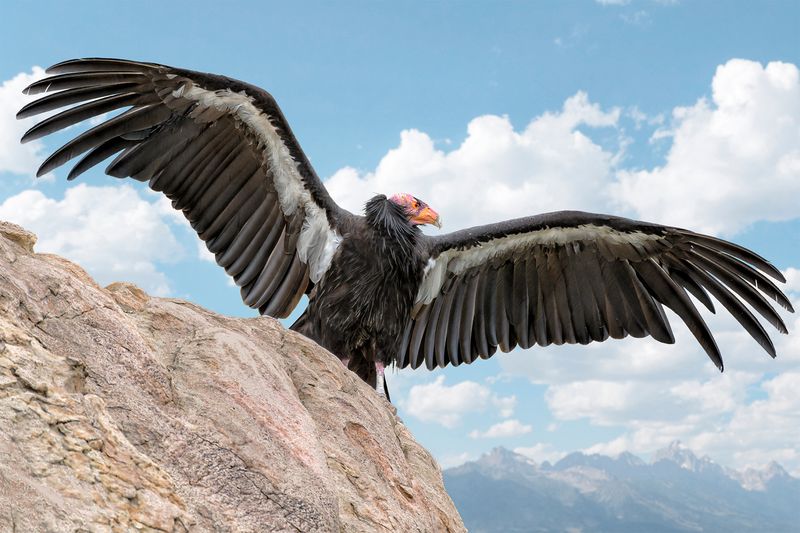
The Andean Condor boasts an incredible wingspan, reaching up to 10.5 feet. This allows it to glide effortlessly across vast distances, a necessity in the mountainous terrains of the Andes.
Its ability to ride thermal air currents reduces the need for constant flapping, conserving energy. These adaptations make it one of the most efficient soaring birds.
The enormous wingspan isn’t just a marvel of nature; it’s a symbol of power and freedom. This grandeur is part of what makes the Andean Condor a revered figure in many South American cultures.
Long Lifespan
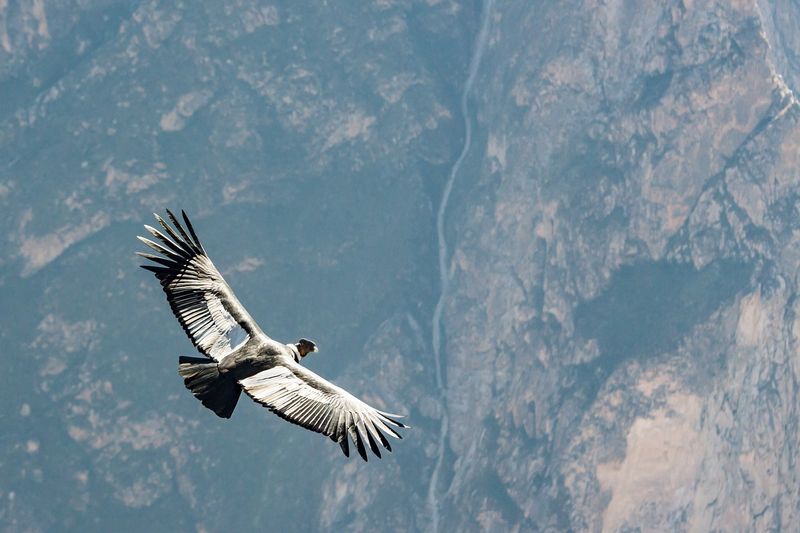
Living up to 70 years in the wild, the Andean Condor enjoys one of the longest lifespans among birds. This remarkable longevity is attributed to their slow metabolism and lack of natural predators.
In the wild, they mature slowly, reaching sexual maturity around six years of age. Their extended lifespan is a testament to their resilience and adaptability in harsh environments.
This allows them to play a vital role in their ecosystem for decades, maintaining the balance as nature’s cleanup crew, feeding on carrion.
Scavenger Supreme
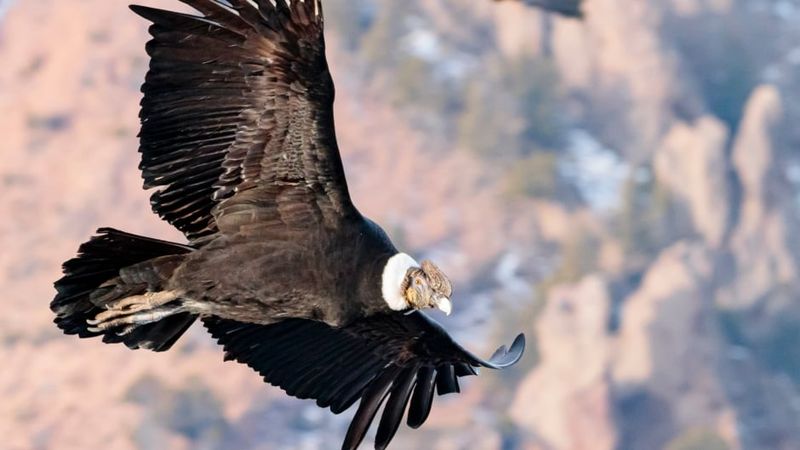
Feasting primarily on carrion, Andean Condors are essential scavengers, preventing the spread of disease by consuming dead animals. Their keen eyesight allows them to spot food from great heights.
Although they prefer large carcasses, they have been known to feed on smaller prey when necessary. Their scavenging habits not only control carrion populations but also support other species that rely on similar food sources.
This ecological role is crucial for maintaining the health of the environment, making them indispensable in their habitats.
Altitude Adaptation
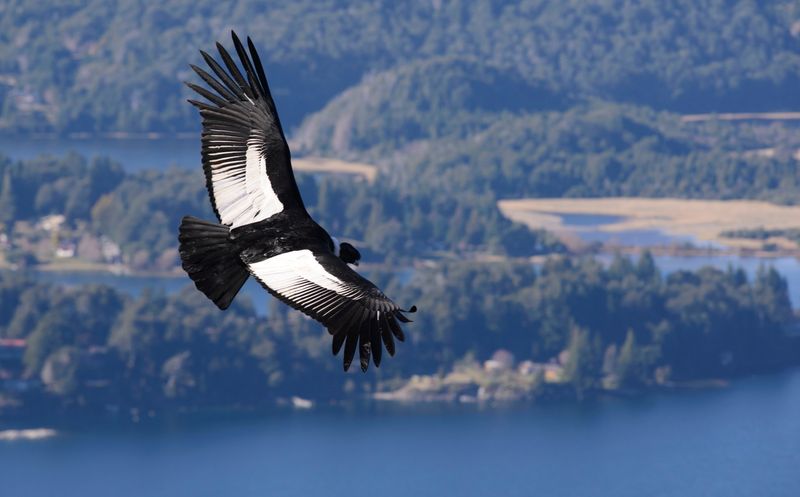
The Andean Condor thrives in high-altitude regions, often soaring above 16,000 feet. Their large wings and ability to efficiently utilize oxygen make them well-suited to these elevations.
This adaptation helps them patrol vast areas for food, ensuring their survival in challenging landscapes. Their presence at such heights offers breathtaking views for those lucky enough to witness their flight.
It’s a majestic sight that connects the earth and sky, embodying the spirit of the mountains themselves.
Cultural Icon
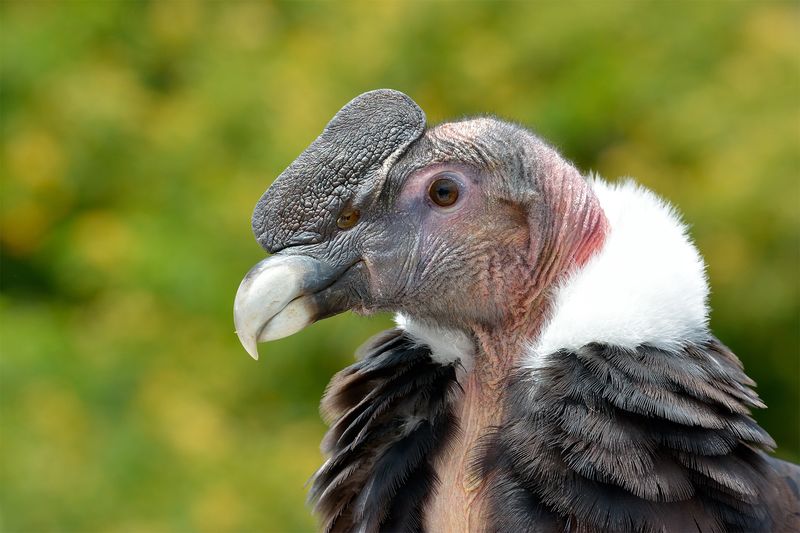
The Andean Condor holds profound cultural significance in Andean mythology and tradition. Often depicted in folklore and art, it symbolizes power, freedom, and the sacred connection between earth and sky.
In many indigenous cultures, the condor is revered as a spiritual messenger. Its symbolism extends beyond mere mythology; it plays a vital role in cultural ceremonies and rituals.
This deep-rooted admiration highlights the bond between the Andean people and nature, fostering respect and conservation efforts for this majestic bird.
Conservation Challenges
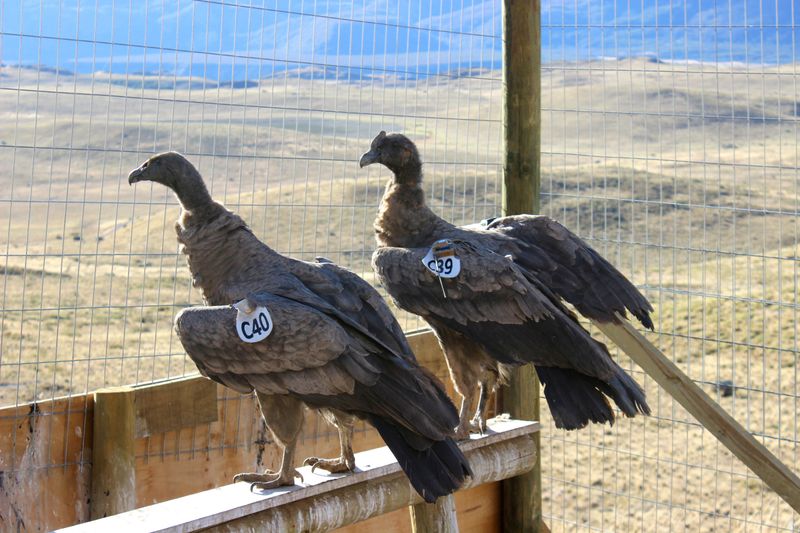
Facing threats from habitat destruction and poisoning, the Andean Condor is classified as near threatened. Conservation efforts are critical to ensuring its survival.
Initiatives include breeding programs and habitat protection, aimed at bolstering population numbers. Despite these efforts, challenges remain, requiring global cooperation to protect this emblematic species.
By raising awareness and supporting conservation policies, we can help preserve the Andean Condor for future generations, ensuring its continued reign over the skies.
Sexual Dimorphism
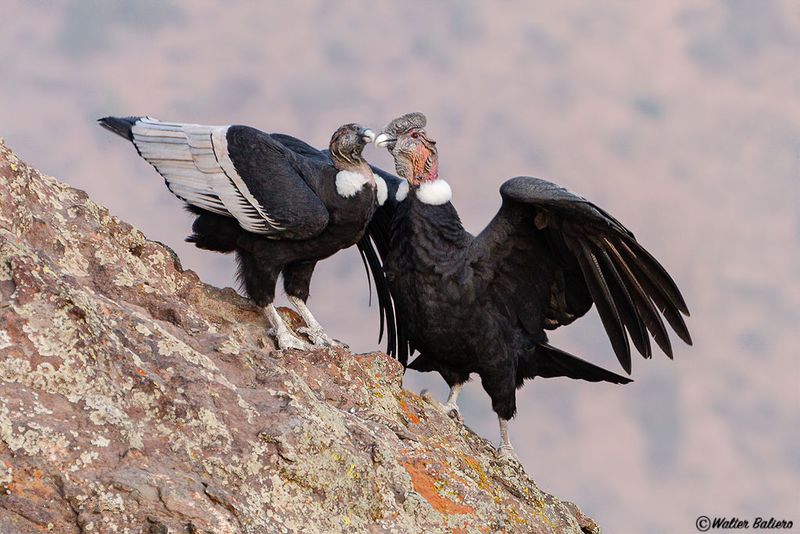
Male and female Andean Condors exhibit noticeable sexual dimorphism. Males are typically larger and possess a distinctive fleshy comb on their heads, which females lack. This unique feature adds to their imposing presence.
The size and features aid in mate selection and social hierarchy within their groups. Observing these differences helps researchers understand their behaviors and dynamics, shedding light on their complex social structures.
This dimorphism is a fascinating aspect of their biology, contributing to their captivating allure.
Efficient Energy Use
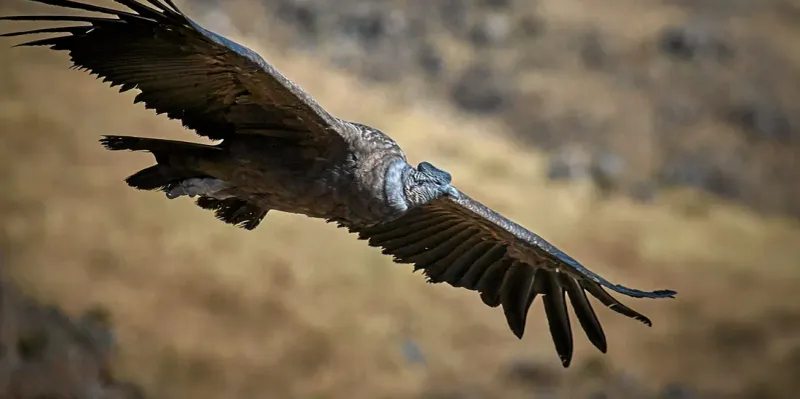
The Andean Condor is a master of energy conservation. By utilizing thermal updrafts, it can soar for hours without flapping its wings. This ability is crucial for covering large distances in search of food across the Andes.
Their efficient flight methods allow them to conserve energy, a vital trait for survival in environments where food can be scarce.
This remarkable adaptation underscores their status as one of nature’s most efficient flyers, blending effortless grace with practical survival skills.
Dietary Preferences
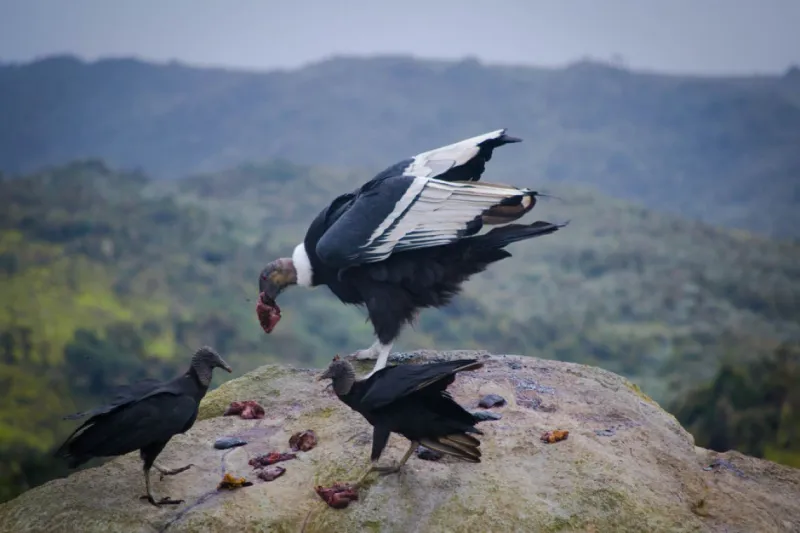
Although primarily scavengers, Andean Condors exhibit selective dietary preferences. They favor fresh carrion, particularly from large mammals like deer or cattle.
Their powerful beaks can tear through tough hides, accessing the nutritious meat beneath. This selectivity ensures they obtain the necessary nutrients while playing a key role in cleaning the ecosystem.
Their dietary habits exemplify their role as nature’s recyclers, maintaining ecological balance and supporting the health of their environment.
Majestic Maturity
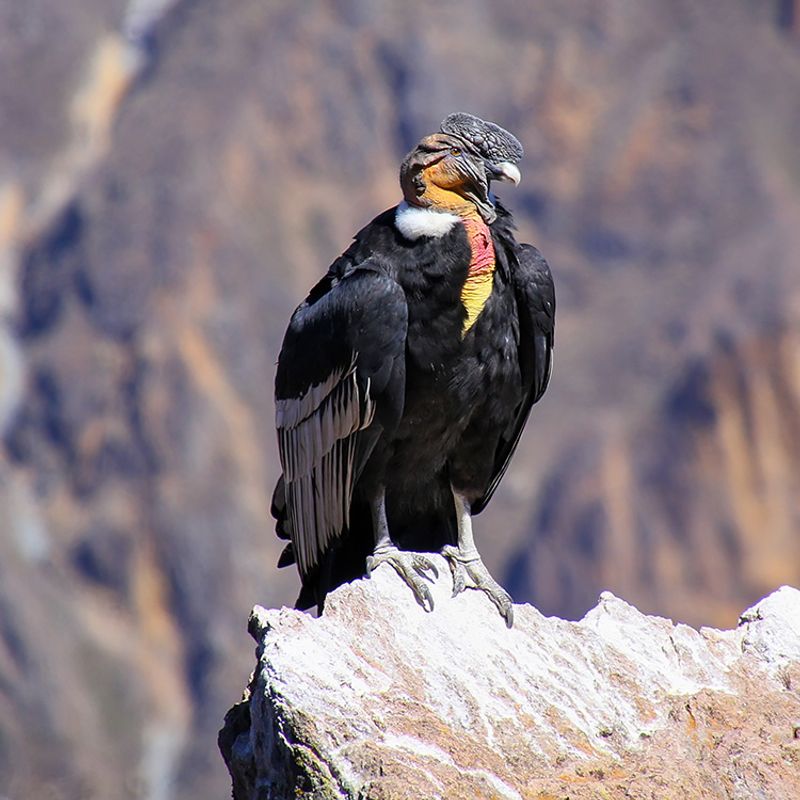
Juvenile Andean Condors display a striking difference in plumage compared to adults. As they mature, their feathers change from brownish hues to the iconic black and white.
This transformation takes several years, marking their journey to adulthood. The gradual shift in appearance is a visual narrative of growth and adaptation.
Observing this process provides insight into their development and survival strategies, highlighting their resilience and the intricate beauty of nature’s design.
Nesting Behavior
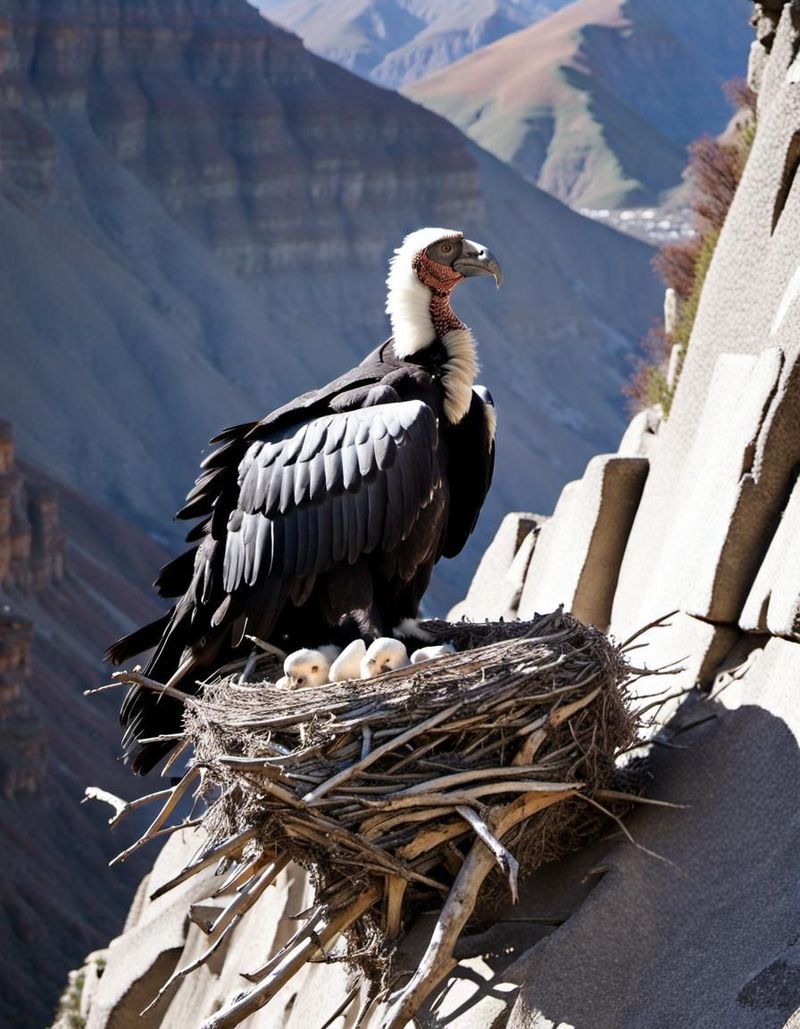
Andean Condors nest on inaccessible cliff ledges, providing safety from predators. They build simple nests using sticks and leaves, often returning to the same site year after year.
This fidelity to nesting sites is a remarkable trait that ensures the protection of their young. Their nesting behavior, emphasizing security and continuity, reflects their commitment to raising offspring in challenging environments.
This dedication is essential for the continuation of their species, showcasing their role as nurturing and protective parents.
Social Dynamics
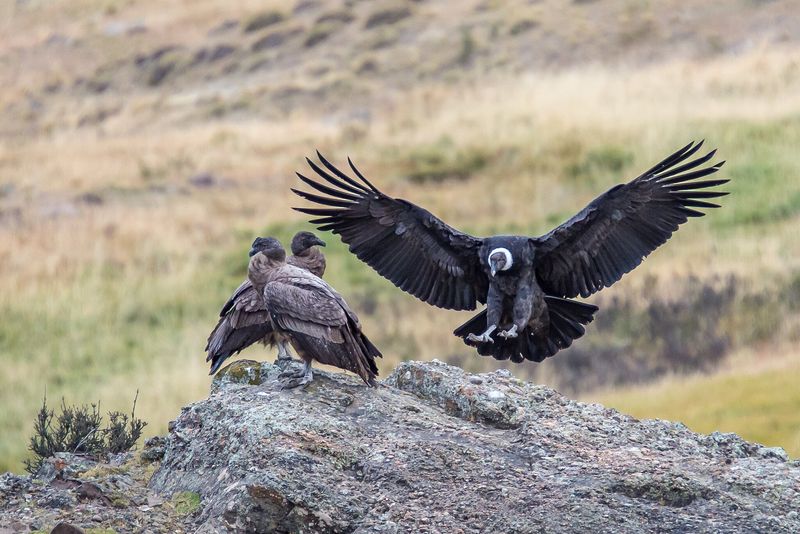
Andean Condors are social birds, often observed in groups. These gatherings are crucial for sharing information about food sources. Their social structures are intriguing, with dominant individuals leading the group dynamics.
These interactions offer researchers insight into their communication and cooperative behavior.
Understanding these dynamics aids conservation efforts, revealing the complexities of their social lives and the importance of cooperation in survival.
Unique Courtship Rituals
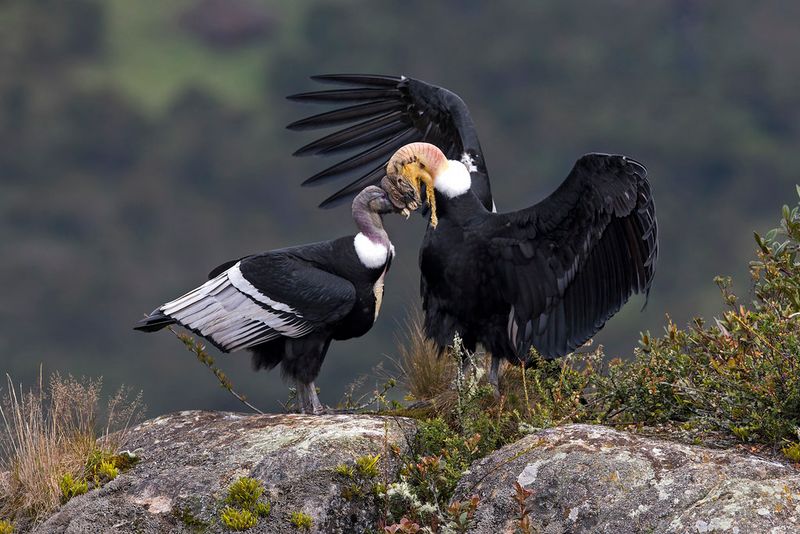
The courtship rituals of the Andean Condor are as captivating as its flight. During the breeding season, males perform elaborate displays, extending their wings and inflating their necks to catch the attention of potential mates.
These displays are a testament to the bird’s expressive nature and its role in the continuation of the species. Courting condors often engage in aerial displays, where they soar and dive together in a synchronized ballet.
This courtship dance is a powerful expression of connection and partnership, reflecting the bond that condors form with their mates.

